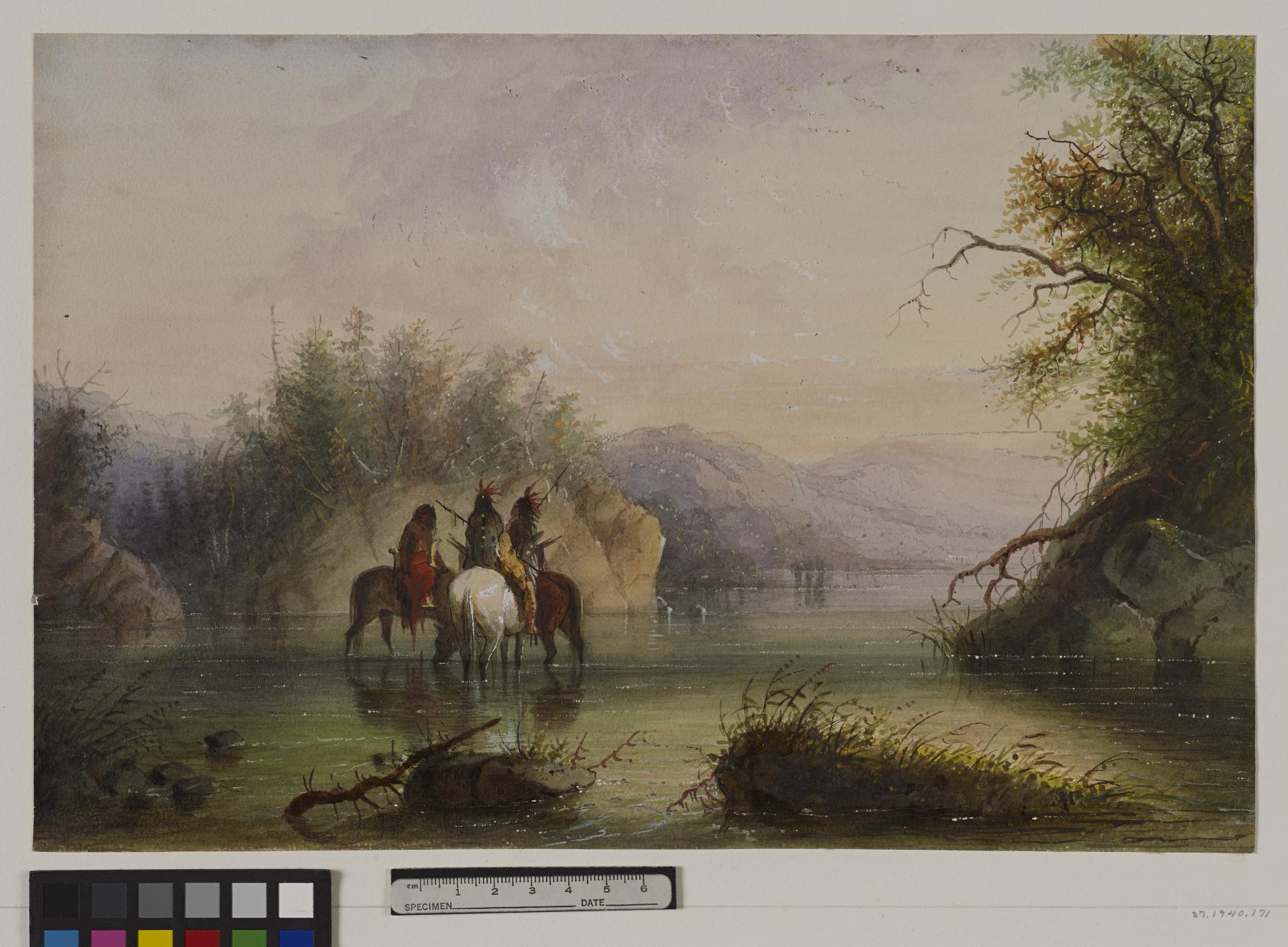River Scene - Watering Horses
(18th and 19th Centuries )
Extracts from Alfred Jacob Miller’s original text, which accompanied his images of Native Americans, are included below for reference. These words, which shaped how Miller’s contemporaries viewed the watercolors, reveal the racism and sexism embedded in 19th-century exploration and colonization of the western part of what is today the United States.
"The location of the scene is Horse-shoe Creek, with a group of Indians refreshing their horses, the riders are armed with the bow, spear, and target;- being toujous pret. They are justified in this, when probably the first party they happen to meet of a different tribe will be also armed to the teeth and provoke them to combat. Nearly all tribes have their nom de guerre- thus the Camanche represent themselves by a waving motion of the hand, signifying the crawling of a snake. Cheyennes- (cut arms) signified by a feint with a knife across the arm.- Arapahos (smellers) sign made by taking hold if the nose.- Sioux (cut throats) sing made by drawing hand across the throat;- Pawnees (wolves) sign made by placing a hand on each side of the forehead, with two fingers pointing front.- and Crows by imitating the flapping of birds'-wings with the hands." A.J. Miller, extracted from "The West of Alfred Jacob Miller" (1837).
In July 1858 William T. Walters commissioned 200 watercolors at twelve dollars apiece from Baltimore born artist Alfred Jacob Miller. These paintings were each accompanied by a descriptive text, and were delivered in installments over the next twenty-one months and ultimately were bound in three albums. Transcriptions of field-sketches drawn during the 1837 expedition that Miller had undertaken to the annual fur-trader's rendezvous in the Green River Valley (in what is now western Wyoming), these watercolors are a unique record of the closing years of the western fur trade.
Provenance
Provenance (from the French provenir, 'to come from/forth') is the chronology of the ownership, custody, or location of a historical object. Learn more about provenance at the Walters.
William T. Walters, Baltimore, 1858-1860, by commission; Henry Walters, Baltimore, 1894, by inheritance; Walters Art Museum, 1931, by bequest.
Geographies
USA (Place of Origin)
Measurements
H: 8 13/16 x W: 13 1/16 in. (22.4 x 33.2 cm)
Credit Line
Commissioned by William T. Walters, 1858-1860
Location in Museum
Not on view
Accession Number
In libraries, galleries, museums, and archives, an accession number is a unique identifier assigned to each object in the collection.
In libraries, galleries, museums, and archives, an accession number is a unique identifier assigned to each object in the collection.
37.1940.171







